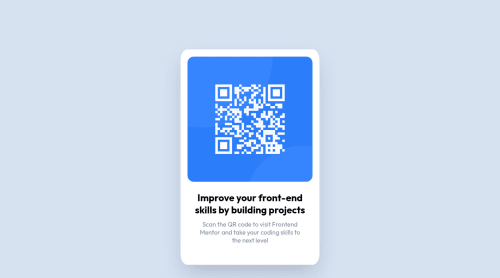
Solution retrospective
I don't know how to keep the attribution on the bottom page, centered, and still stays there even on mobile mode. With position: fixed it comes up inside the box when the window's height is smaller than the white box.
Please log in to post a comment
Log in with GitHubCommunity feedback
- @AdrianoEscarabote
Hi Selvi, how are you?
I really liked the result of your project, but I have some tips that I think you will enjoy:
- every Html document must contain the main tag, so we can identify the main content, to fix this, wrap all the content with the main tag. HTML5 landmark elements are used to improve navigation experience on your site for users of assistive technology.
- Consider using rem for font size .If your web content font sizes are set in absolute units, such as pixels, the user will not be able to re-size the text or control the font size based on their needs. Relative units “stretch” according to the screen size and/or user’s preferred font size, and work on a large range of devices.
if you want to continue coding with px, you can download a very useful extension in vscode, it converts px to rem! link -> px to rem
The rest is great!
I hope it helps... 👍
Marked as helpful - @eleslin
Hi Selvi! Nice work!
I also did this challenge as my first work here.
Responding to your question, I think it could be solved by applying a height to your body element (for example, 100vh), so that it takes the full screen size, and by setting the .attribution's position to sticky, with a bottom property set to 0.
Hope this can help you!
Marked as helpful
Join our Discord community
Join thousands of Frontend Mentor community members taking the challenges, sharing resources, helping each other, and chatting about all things front-end!
Join our Discord